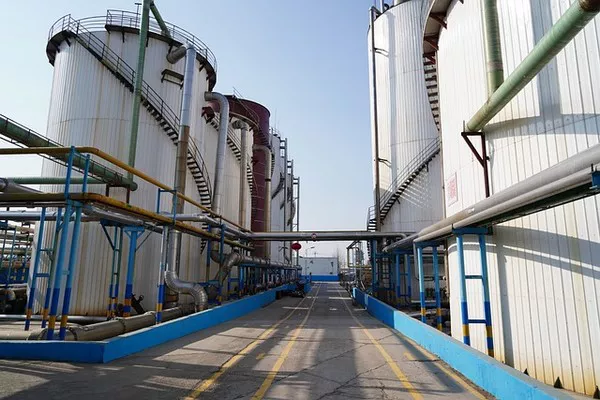Wastewater treatment plants play a crucial role in maintaining environmental sustainability and public health. They are responsible for treating and purifying wastewater, making it safe to return to natural water bodies or for reuse. The cost of building and maintaining these facilities is a significant concern for municipalities and industries alike. In this article, we will delve into the factors that influence the cost of wastewater treatment plants and provide a comprehensive overview of the expenses involved in constructing and operating these facilities.
Understanding the Types of Wastewater Treatment Plants
Before diving into the cost considerations, it’s essential to understand the different types of wastewater treatment plants. These facilities can be broadly classified into three main categories:
Primary Treatment: Primary treatment focuses on removing solids and floatable materials from the incoming wastewater. It includes processes such as screening, sedimentation, and sometimes flotation.
Secondary Treatment: Secondary treatment further refines the wastewater by breaking down organic matter and biological contaminants. This stage typically involves biological processes like activated sludge, trickling filters, and rotating biological contactors.
Tertiary Treatment: Tertiary treatment, also known as advanced treatment, is an optional stage that provides additional purification to the wastewater. It can include processes like chemical coagulation, filtration, and disinfection, ensuring that the treated water meets stringent quality standards.
Factors Influencing the Cost of Wastewater Treatment Plants
The cost of a wastewater treatment plant varies significantly depending on several key factors:
Treatment Type: The type of treatment required is the most critical factor influencing the cost. Tertiary treatment, which involves additional purification processes, is more expensive than primary or secondary treatment.
Capacity: The size and capacity of the plant significantly impact costs. A small facility serving a small community will be less expensive to construct and operate than a large, industrial-scale plant.
Location: The geographic location of the plant can influence costs due to variations in land prices, labor costs, and environmental regulations. Sites in densely populated areas or sensitive ecosystems may require additional investments in infrastructure and environmental protection.
Regulatory Requirements: Meeting environmental regulations and standards is essential and often requires specific equipment and technologies. Compliance with stringent regulations can increase costs.
Infrastructure: The condition of existing infrastructure can impact costs. Retrofitting or upgrading older plants can be more expensive than building new facilities from scratch.
Technology and Equipment: The choice of technology and equipment used in the treatment process plays a crucial role. Advanced and energy-efficient technologies may cost more upfront but can lead to long-term savings.
Site Specifics: Site-specific factors, such as soil conditions, terrain, and accessibility, can significantly affect construction costs.
Labor Costs: Labor costs, including skilled operators and maintenance staff, can vary based on location and labor market conditions.
Energy Costs: Energy consumption is a significant ongoing expense for wastewater treatment plants. The choice of energy-efficient technologies and energy sources can impact long-term operational costs.
Resilience and Redundancy: Building redundancy and resilience into the system to ensure uninterrupted operations in emergencies can increase costs.
Cost Breakdown: Building a Wastewater Treatment Plant
Design and Engineering: The first step in constructing a wastewater treatment plant involves designing the facility to meet the specific requirements and regulations of the region. This phase includes feasibility studies, environmental impact assessments, and detailed engineering plans. The design and engineering phase typically accounts for 5-10% of the total project cost.
Land Acquisition and Site Preparation: Acquiring the land for the plant and preparing it for construction involves costs related to land purchase, soil testing, excavation, and site grading. Land acquisition and site preparation can account for approximately 10-15% of the total cost.
Construction: The construction phase is the most substantial portion of the total cost. It includes building the treatment structures, installing equipment, and constructing all necessary infrastructure, such as access roads and utilities. Construction costs can range from 50% to 70% of the total project cost.
Equipment and Technology: The cost of equipment and technology can vary widely based on the chosen treatment processes. Primary and secondary treatment systems are generally less expensive than tertiary treatment systems, which require additional advanced equipment. Equipment and technology costs typically account for 10-25% of the total cost.
Labor and Installation: The expenses related to labor and installation include the wages of workers, contractors, and specialized installation teams. This category can represent 5-15% of the total cost.
Permits and Regulatory Compliance: Obtaining the necessary permits and ensuring compliance with environmental regulations can be a substantial expense. Costs in this category typically range from 5% to 10% of the total project cost.
Contingency and Overhead: To account for unforeseen circumstances and project management costs, a contingency and overhead budget is typically allocated, usually around 5-10% of the total cost.
Operational Costs of Wastewater Treatment Plants
Once the wastewater treatment plant is operational, ongoing expenses include:
Labor and Maintenance: Staff salaries, maintenance, and routine operational expenses represent a significant portion of the operational budget. Skilled operators and maintenance personnel are crucial to the plant’s efficiency and compliance with regulations.
Energy Consumption: Energy costs can be substantial, especially for aeration, pumps, and motors. Implementing energy-efficient technologies and practices can help reduce these ongoing expenses.
Chemicals and Supplies: Some treatment processes may require the use of chemicals and supplies for disinfection, pH adjustment, or nutrient addition.
Replacement and Upgrades: Over time, equipment and infrastructure may require replacement or upgrades to maintain the plant’s efficiency and compliance with changing regulations.
Administrative and Regulatory Compliance: Ongoing administrative costs include permit renewals, reporting, and compliance with regulatory requirements.
Conclusion
The cost of building and operating a wastewater treatment plant can vary widely based on numerous factors. It’s essential to carefully consider the treatment type, capacity, location, regulatory requirements, and infrastructure when planning a wastewater treatment project. While the upfront costs can be significant, investing in efficient technologies, renewable energy sources, and robust maintenance practices can result in long-term savings and environmental benefits. Ultimately, the expense of wastewater treatment is an investment in public health, environmental protection, and sustainable water resources.

